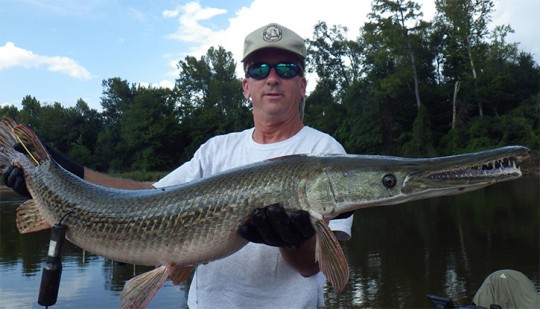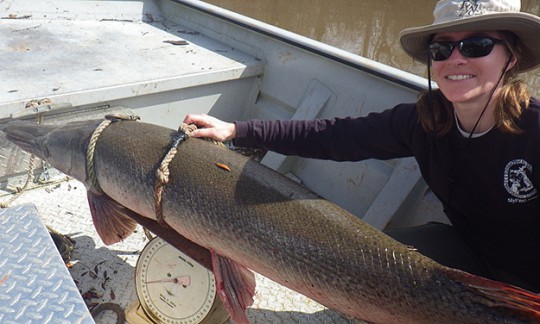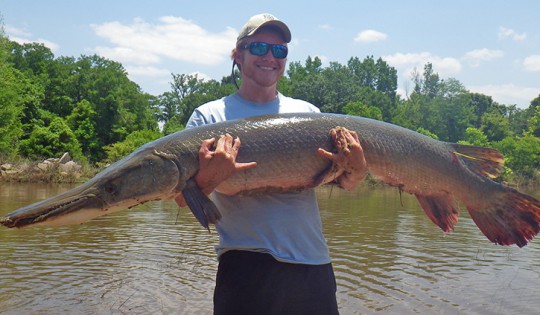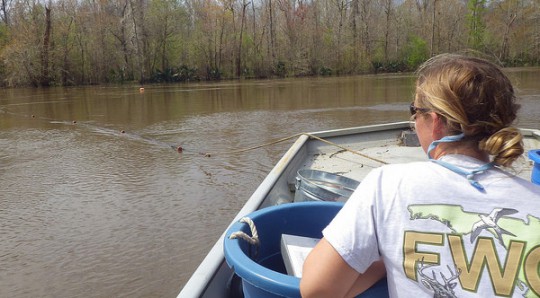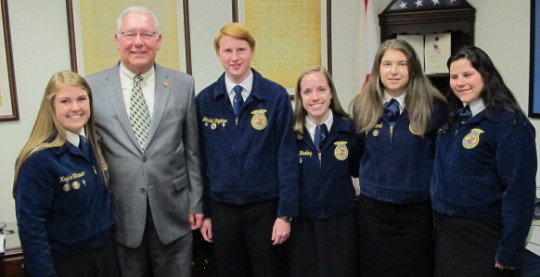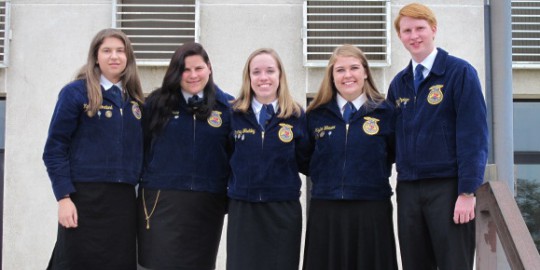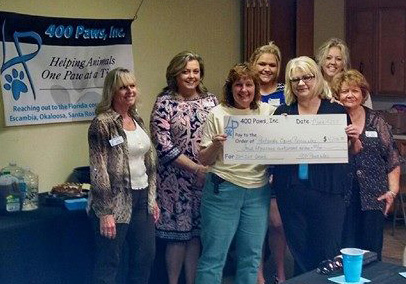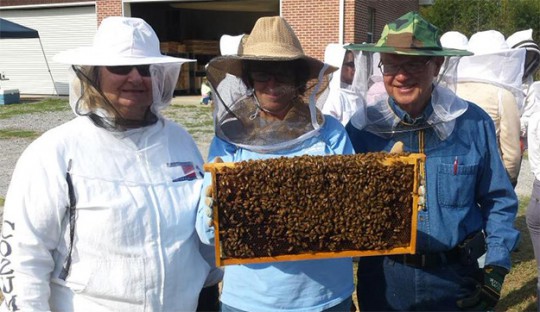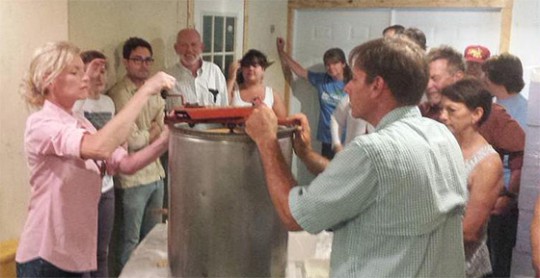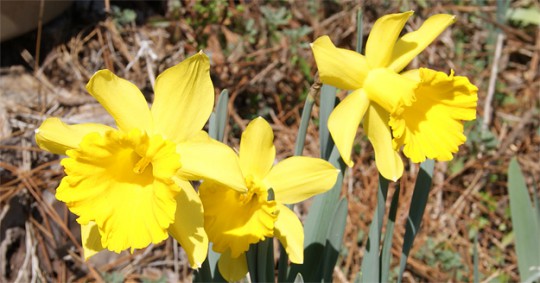On A Quest For A Freshwater Giant: Alligator Gar On The Escambia River
March 26, 2015
The quest is on to find one of Florida’s most mysterious fish with a prehistoric look in the Escambia River.
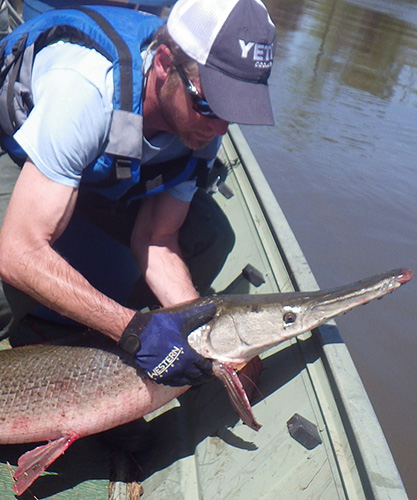 Finding alligator gar can be a challenge, but it’s one biologists with the Fish and Wildlife Research Institute are taking on to learn more about the population of the fish in Florida.
Finding alligator gar can be a challenge, but it’s one biologists with the Fish and Wildlife Research Institute are taking on to learn more about the population of the fish in Florida.
Alligator gar have historically resided in rivers and brackish waters throughout the southeastern U.S. from the Florida Panhandle – from the Apalachicola River west to the Perdido River – to Texas and Mexico. Since the mid-1900s, alligator gar numbers have declined, leaving populations in only half of the 14 states they once inhabited. The FWC acknowledged this in 2006, prohibiting harvest of alligator gar for all but scientific purposes.
Since 2010, FWRI researchers have been tagging alligator gar in the Escambia River to learn more about their movement and habitat use. Using large-mesh gill nets, researchers collect adult alligator gar and fit them with telemetry tags before releasing them back into the river. These tags transmit information through radio and sound signals, allowing researchers to track each individual’s location for about two years.
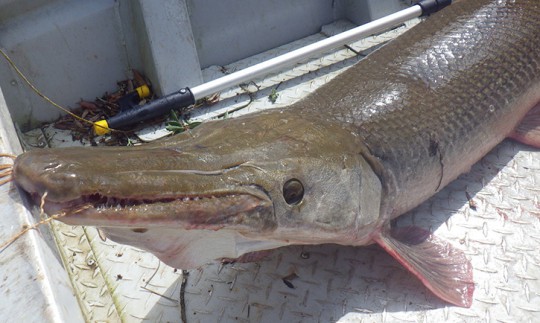 Three years into the study, researchers have tagged 22 alligator gar ranging from 11 pounds to a state record 132 pounds; tagged fish average 60 pounds. Researchers are trying to identify what habitats these fish prefer, how far they travel and whether they return to the same location over time. Preliminary tracking data indicate alligator gar are highly mobile and can travel more than 40 miles in a single week.
Three years into the study, researchers have tagged 22 alligator gar ranging from 11 pounds to a state record 132 pounds; tagged fish average 60 pounds. Researchers are trying to identify what habitats these fish prefer, how far they travel and whether they return to the same location over time. Preliminary tracking data indicate alligator gar are highly mobile and can travel more than 40 miles in a single week.
The data also reveal their movement and habitat use varies by season. In winter, the tagged fish tend to reside in a slough – a cove off the main river with no current – and move very little. As the season changes to spring, they begin traveling the river’s main channel but return repeatedly to the slough. Only in late spring did the gar venture from their home-base slough and begin cruising. Biologists recorded alligator gar moving as far north as Century and the Alabama state line and as far south as Escambia Bay during this time.
No population data for alligator gar in Florida currently exists. However, data from this tagging study are helping biologists develop a strategy for estimating the population size of alligator gar, first in the Escambia River, then possibly in other rivers in northwest Florida’s coastal plain.
Pictured: Alligator gar research on the Escambia River. Photos for NorthEscambia.com, click to enlarge.
Sheriff’s Office: Track Your Valuables With Online Tool
March 25, 2015
The Escambia County Sheriff’s Office is introducing a free online system that will help keep track of valuable personal property. ReportIt is a free, secure online service which will allow citizens to record serial numbers and upload images for phones, electronics, and other valuables. Should those items ever be stolen, investigators say, having the information will go a long way in accurately and quickly identifying your property.
 The ReportIt service is a part of LeadsOnline, the online system that works with police across the country to track and recover stolen property. ECSO Investigators use LeadsOnline to help track and recover stolen property —- everything from jewelry to sporting equipment to electronics, computers, cameras, and other items such as designer clothing, collectibles, and other items with invaluable personal worth.
The ReportIt service is a part of LeadsOnline, the online system that works with police across the country to track and recover stolen property. ECSO Investigators use LeadsOnline to help track and recover stolen property —- everything from jewelry to sporting equipment to electronics, computers, cameras, and other items such as designer clothing, collectibles, and other items with invaluable personal worth.
The system allows detectives to search for the items using a variety of parameters, including item descriptions and serial numbers. When an item is sold to a pawn or secondhand shop, the product information is entered in the LeadsOnline database and is immediately viewable by participating law enforcement agencies across the country.
Citizens can store an unlimited number of serial numbers, item descriptions, pictures, and scans of receipts so items may be more easily identified in the event of theft. This record may also come in handy when filing claims with insurance providers in the event of loss.
Citizens wishing to participate in ReportIt can register for the free service at reportit.leadsonline.com and begin building their personal property inventory list.
FFA Members Attend Ag On The Hill
March 24, 2015
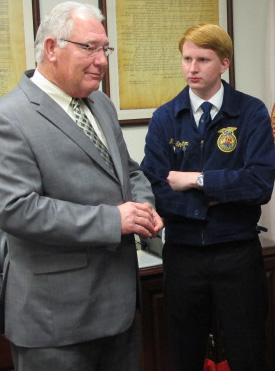 Students from Northview High School attended the annual “Ag On The Hill” event last week in Tallahassee. The local FFA members were able to visit with state leaders, including Sen. Greg Evers and Commissioner of Agriculture Adam Putnam, at the Florida Capital.
Students from Northview High School attended the annual “Ag On The Hill” event last week in Tallahassee. The local FFA members were able to visit with state leaders, including Sen. Greg Evers and Commissioner of Agriculture Adam Putnam, at the Florida Capital.
Ag on the Hill is presented annually by the Florida Association of Agricultural Educators, The University of Florida and the Florida Department of Agriculture and Consumer Services.
Pictured top: With Sen. Greg Evers are Northview FFA members Haylee Waver, Mitchell Singleton, Courtney Weekly, Kaitlyn Kleinatland and Tiffany Cruce. Photos for NorthEscambia.com, click to enlarge. Pictured inset; Mitchell listens to Evers. Pictured below: The Northview FFA students “on the hill”. Photos for NorthEscambia.com, click to enlarge.
Roll Out The Unwelcome Mat To Formosan Termites
March 24, 2015

Rep. Doug Broxson (R-Gulf Breeze) is hosting several free public workshops for area residents to learn necessary steps to protect their greatest investment from costly Formosan termite damage.
Annually, Formosan termites cause $1 billion in damage in the United States, and our surrounding areas of Escambia, of Santa Rosa and Okaloosa countis are known hot spots for these aggressive pests. Florida’s temperate climate provides a perfect environment for termites, and immediate signs of structural damage to a home may go undetected for long periods of time. Springtime serves as the breeding season for most species of termites, and Formosan termites will be swarming in May, so it is important for residents to understand what they can do in advance to protect their homes.
The Florida Department of Agriculture and Consumer Services is collaborating with the University of Florida/Institute of Food and Agricultural Science’s Extension Offices in the Panhandle to educate homeowners about Formosan termites. Homeowners can learn methods for controlling this structural pest and protecting their homes by attending one of four educational meetings being held in the month of April. Homeowners are also encouraged to bring their pest control contract to one of these workshops for review.
Specific topics include:
- Formosan termite biology including simple ways to identify them
- Available Formosan termite pest control protection for your home
- Florida law and building code pertaining to termites
- What you can do to recognize and fix the weaknesses in and around your home
- Bring your pest control contract for review by FDACS experts
Registration is encourage, but not required, for meetings that will be held as follows:
Escambia County Meeting
Tuesday, April 7, 6 – 8 p.m. at Escambia County Extension, 3740 Stefani Road, Cantonment. Contact Beth Bolles to register: bbolles@ufl.edu or (850) 475-5230.
South Santa Rosa County Meeting
Thursday, April 9, 6- 8 p.m. at Tiger Point Community Center, 1370 Tiger Park Lane, Gulf Breeze, Contact Johanna Welch to register: Johanna.Welch@FreshFromFlorida.com or (850) 363-5845.
North Santa Rosa County Meeting
Tuesday, April 14, 2015, 6- 8 p.m. at Santa Rosa County Extension, 6263 Dogwood Drive, Milton. Contact Johanna Welch to register: Johanna.Welch@FreshFromFlorida.com or (850) 363-5845.
Photo courtesy UF/IFAS for NorthEscambia.com, click to enlarge.
BBB Looking For Exceptional, Ethical Businesses For Torch Awards
March 23, 2015
The Better Business Bureau Foundation serving Northwest Florida is looking for businesses and charities to participate in its 10th annual Torch Award for Marketplace Ethics program. Businesses may self-nominate or be nominated by others.
The Torch Award publicly recognizes businesses and charities that maintain a solid commitment to conducting their business practices in an ethical manner.
BBB Accreditation is not required to enter; however, applicants must be physically located within the 14 county service area of BBB|Northwest Florida. Charities must have participated in BBB|Northwest Florida’s Charity Review Program within the last two years.
All nominees will be contacted by BBB for an on-site visit. This provides an opportunity for entrants to showcase the ways they incorporate ethics and integrity into their business practices.
Along with the Torch Award, BBB Foundation will award the Customer Service Excellence Award to individuals who go above and beyond in their customer service activities, as well as the Student Ethics Scholarship provided to high school students who demonstrate leadership, community service and overall personal integrity.
The application deadline for all awards is March 27. For more information, or to make a nomination for the Torch Award for Marketplace Ethics, visit nwfl.bbb.org/TorchAward.
Panhandle Equine Rescue Awarded $4,200 Grant
March 23, 2015
Panhandle Equine Rescue in Cantonment has received a $4,200 grant to use towards a barn for additional hay storage.
The grant was awarded by 400 Paws, a group with a missing to raise funds for qualified non-profit animal organizations; to educate the community regarding animal welfare; and to emphasize the need for financial assistance within local animal shelters and rescue groups.
The only horse rescue in Escambia County, Panhandle Equine Rescue was founded by a small group of concerned citizens with a mission to rescue, rehabilitate and provide adoption services for abused, neglected and abandoned equines.
Submitted photo for NorthEscambia.com, click to enlarge.
Molino Park Math A Thon Raises Money For St. Jude Children’s Hospital
March 23, 2015
Almost 40 students from Molino Park Elementary School recently participated in the St. Jude Math-A-Thon for the St. Jude Children’s Research Hospital. Sponsors donated money to student who completed math projects, allowing the students to gain valuable math experience while helping others. Molino Park raised a total of $880 for St. Judes. Photo for NorthEscambia.com, click to enlarge.
All Abuzz About Bees
March 22, 2015
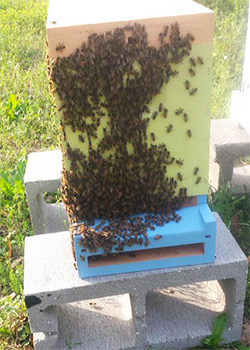 A “Bee Field Day” was held Saturday, part of a beekeeping short course being offered this month by the UF/IFAS Extension Panhandle Agriculture Team. Participants were able to learn personal protection, how to start a smoker, proper handling techniques, queen identification and honey extraction during the hands-on experience. Class participants will lean about pests and diseases next week. Courtesy photos for NorthEscambia.com, click to enlarge.
A “Bee Field Day” was held Saturday, part of a beekeeping short course being offered this month by the UF/IFAS Extension Panhandle Agriculture Team. Participants were able to learn personal protection, how to start a smoker, proper handling techniques, queen identification and honey extraction during the hands-on experience. Class participants will lean about pests and diseases next week. Courtesy photos for NorthEscambia.com, click to enlarge.
Weekend Gardening: Daffodils Signal Spring
March 22, 2015
Few plants seem to signify the freshness of spring quite as well as daffodils. The name “daffodils” is derived from “addodell” a variant of Asphodel (a plant of the Asphodelus genus.) In historical documents and the common language of 16th century Europe, the term “daffodil” referred specifically to the wild daffodil, Narcissus pseudonarcissus.
The derivation of the Latin narcissus is unknown. It is frequently linked to the Greek myth of Narcissus, who was rumored to be so obsessed with his own reflection that he died while gazing at himself in a pool of water. From the location of his death sprang the narcissus plant. Another Greek myth finds Persephone, daughter of the goddess Demeter, lured to her doom by the God Hades while picking a narcissus. Therefore the plant is perceived as a symbol of vanity in some Western culture.
Others attribute the plants’ name to its narcotic properties. One translation of the Greek name is “I grow numb!” All narcissus species contain the alkaloid poison lycorine, mostly in the bulb but also in the leaves. Members of the Amaryllidaceae family contain unique types of alkaloids. They are responsible for the poisonous properties of a number of the species. Of the 200 different chemical compounds found in this plant family, at least 79 of them can be found in narcissus.
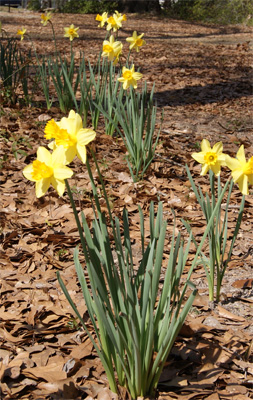 Daffodils are a popular potted plant for cut flowers, but also make attractive naturalized ground covers in gardens and around trees, providing color from the end of winter through late spring. If the narcissus blooms on Chinese New Year, it is said to bring wealth and good fortune throughout the year. The flower color varies from white through pinks and yellows to deep reddish-orange with multiple petal forms. Hundreds of cultivars are available.
Daffodils are a popular potted plant for cut flowers, but also make attractive naturalized ground covers in gardens and around trees, providing color from the end of winter through late spring. If the narcissus blooms on Chinese New Year, it is said to bring wealth and good fortune throughout the year. The flower color varies from white through pinks and yellows to deep reddish-orange with multiple petal forms. Hundreds of cultivars are available.
Planting dates vary according to geographical location, but bulbs are usually planted in the fall when the soil is cool. Daffodils grow well in full sun or light shade, with the blooms lasting longer when protected from the noon day sun. When selecting a location for planting, it should be noted that the individual flowers will face the sun.
Pre-chilled bulbs should be planted in 6-8” deep holes with a tablespoon of slow release fertilizer added to the soil directly under the bulb and with 4-5” of soil covering the bulb. Watering throughout the winter will be necessary if rains are infrequent. After flowering, the daffodils need to be fertilized and watering should continue. The foliage will naturally turn yellow and die as stored food is restored to the bulb.
Division, transplanting and collection for forcing potted plants can be done after all the foliage has declined. To force Daffodils to bloom at varied times in a container the dried bulbs will need to be stored at a 45° F temperature for 4-6 weeks prior to being placed in the sun to grow.
The bright, cheery Daffodil flowers are beginning to bloom now and will continue as Easter approaches, reminding us that spring really is coming.
Email Sheila Dunning at sdunning@ufl.edu.
Photos by Matthew Orwat for NorthEscambia.com, click to enlarge.
Trio Wins Ernest Ward Talent Show
March 21, 2015
The trio of (pictured L-R) Madison Sherouse, Jaylon North and Seth Killiam one first place in the annual Ernest Ward Middle School Talent Show Friday night. Submitted photo for NorthEscambia.com, click to enlarge.


